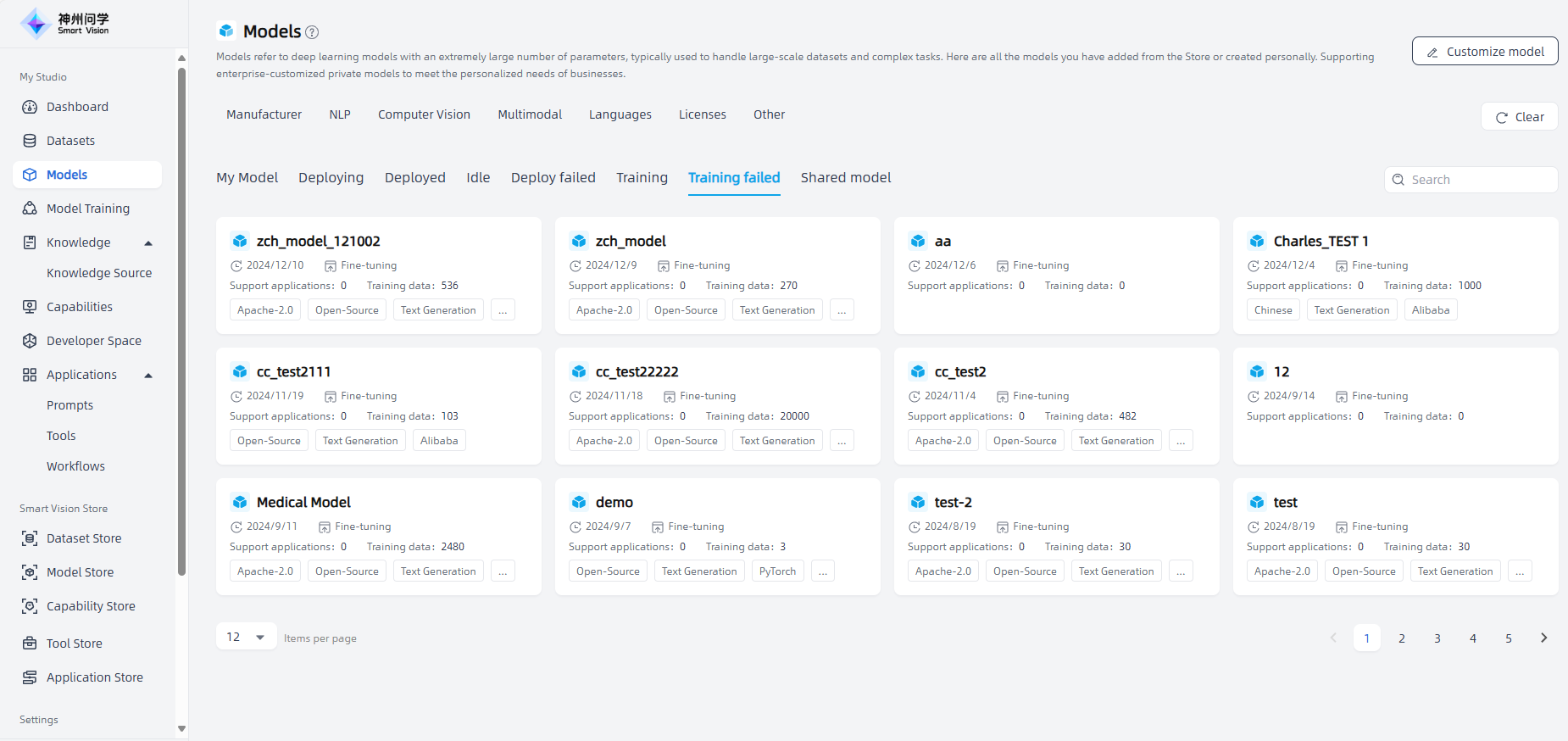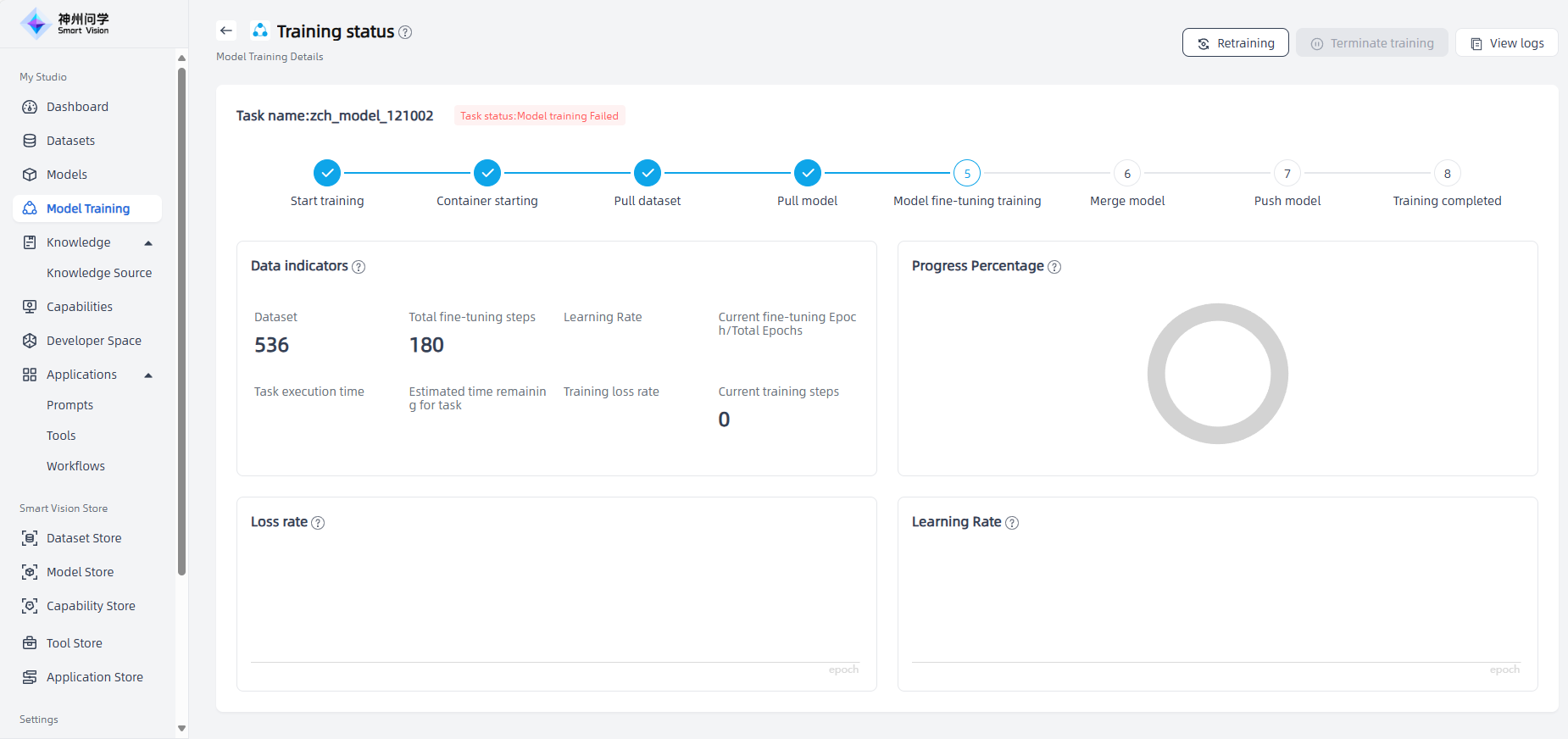Model Training
If you cannot find an ideal model in Model Store, you can consider the private model approach, that is, customizing/training the big model. By customizing/training the big model, you can train the big model according to your own needs and goals, which not only ensures that the model is relevant to your specific field or topic, but also better meets your personalized needs.
Note: The training and maintenance of private big models requires certain technical and resource investment, and needs to comprehensively consider factors such as demand, cost, and resources.
Introduction
Private models are trained by open-source models added from Model Store, which involves training preparation, model fine-tuning, maintenance, and updates.
- Training preparation: Prepare the dataset and parent model for model training, that is, Studio-Dataset and Models need to have the dataset and model for model training.
- Model fine-tuning: Use the selected parent model to fine-tune on your specific dataset. The fine-tuning process involves unfreezing some model layers and then adjusting the weights on a specific task to adapt to your data.
- Maintenance and update: Continuously monitor the performance of the model and update and maintain it as needed, such as regularly re-fine-tuning the model to adapt to new data and task requirements.
Applicable Scenarios
- Enterprise-level applications: Private models can be applied to specific business scenarios within the enterprise, such as customer service, product recommendations, market analysis, etc. By training private models, enterprises can better understand customer needs, provide personalized services and products, and improve customer satisfaction and market competitiveness.
- Scientific research: In the field of scientific research, private models can be used to process large amounts of scientific research data, extract useful information and knowledge, and provide more accurate and in-depth analysis and insights for researchers.
- Education: Private models can be applied to the field of education, such as intelligent teaching, personalized tutoring, etc. By analyzing students' learning situation and needs, private models can provide teachers with more effective guidance and assistance, and improve the quality and effectiveness of teaching.
- Intelligent customer service: Private models can be applied to the field of intelligent customer service, understand and respond to customer inquiries through natural language processing technology, and provide 24/7 online customer service. This can improve response speed and quality and reduce the cost of manual customer service.
- Content creation and management: Private models can automatically generate high-quality content, such as reports, press releases, blog posts, etc. This can improve the efficiency of content creation, reduce costs, and ensure the accuracy and consistency of content.
Private models are not limited to the above scenarios, and their application scope can be expanded and customized according to specific needs and scenarios.
Operation Guide
Start: There are four ways to conduct model training: ① In Studio - Models, click the "Customize Model" button in the upper right corner; ② In Studio - Models, click a model to enter the model details page, and click the "Customize" button in the upper right corner; ③ In Studio - Model Training, directly conduct model training; ④ In Model Store, click the "Customize Model" button in the upper right corner.
Fill in model training information:
Dataset for Training: Select the specific dataset you want to use to train the model and leave the default options for subset.
Mother Model: Name the model you want to train, select the mother model, and set the learning rate, epoch, save steps, and training batch size.
Environment and Resources: Select an environment for model training and allocate sufficient resources.
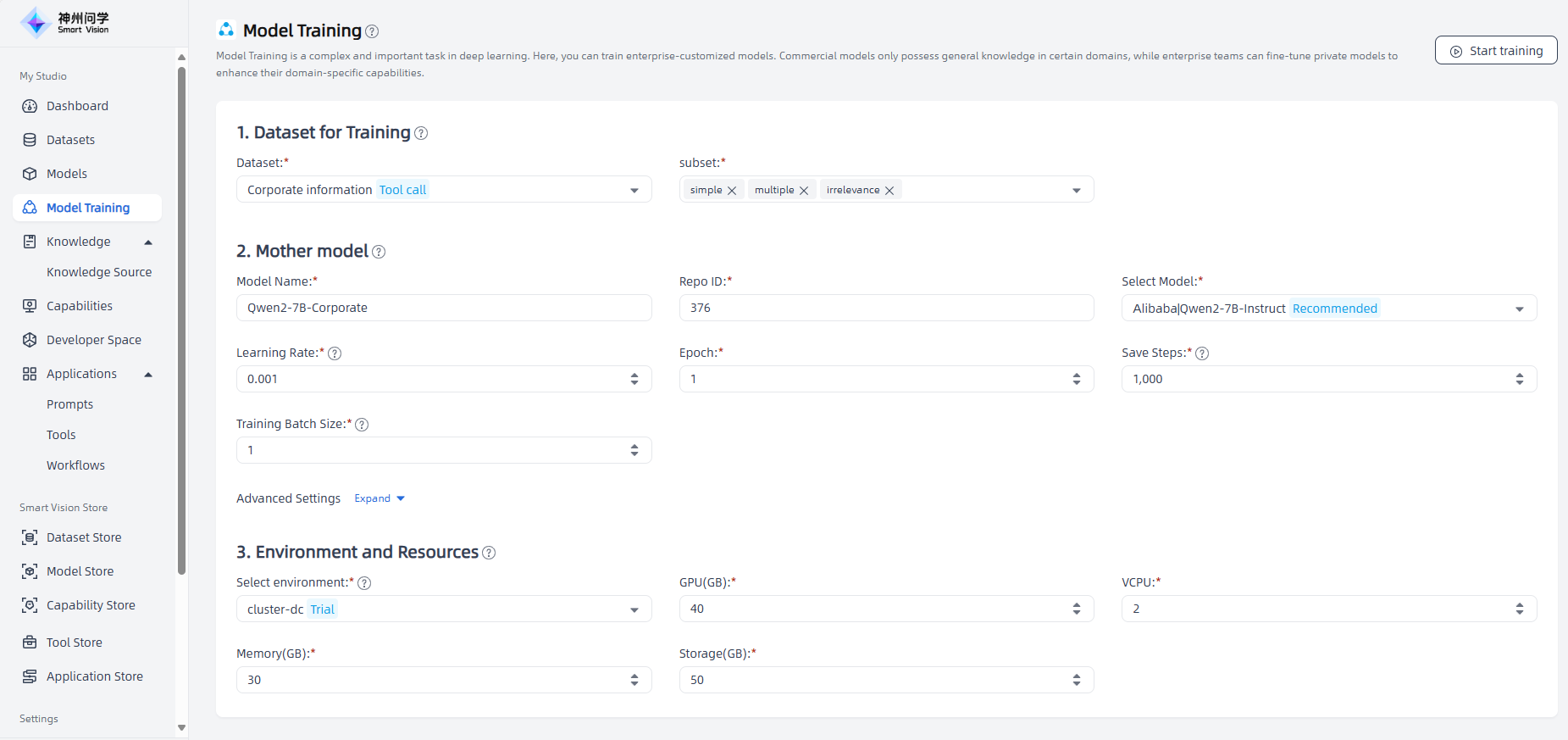
Model training: Click "Start Training" in the upper right corner to start model training. The trained model will be displayed in Studio - Models.
When training is not completed, it will be displayed in "Training". Click it to view the training status and details. It also supports retraining, terminating training, and viewing logs.
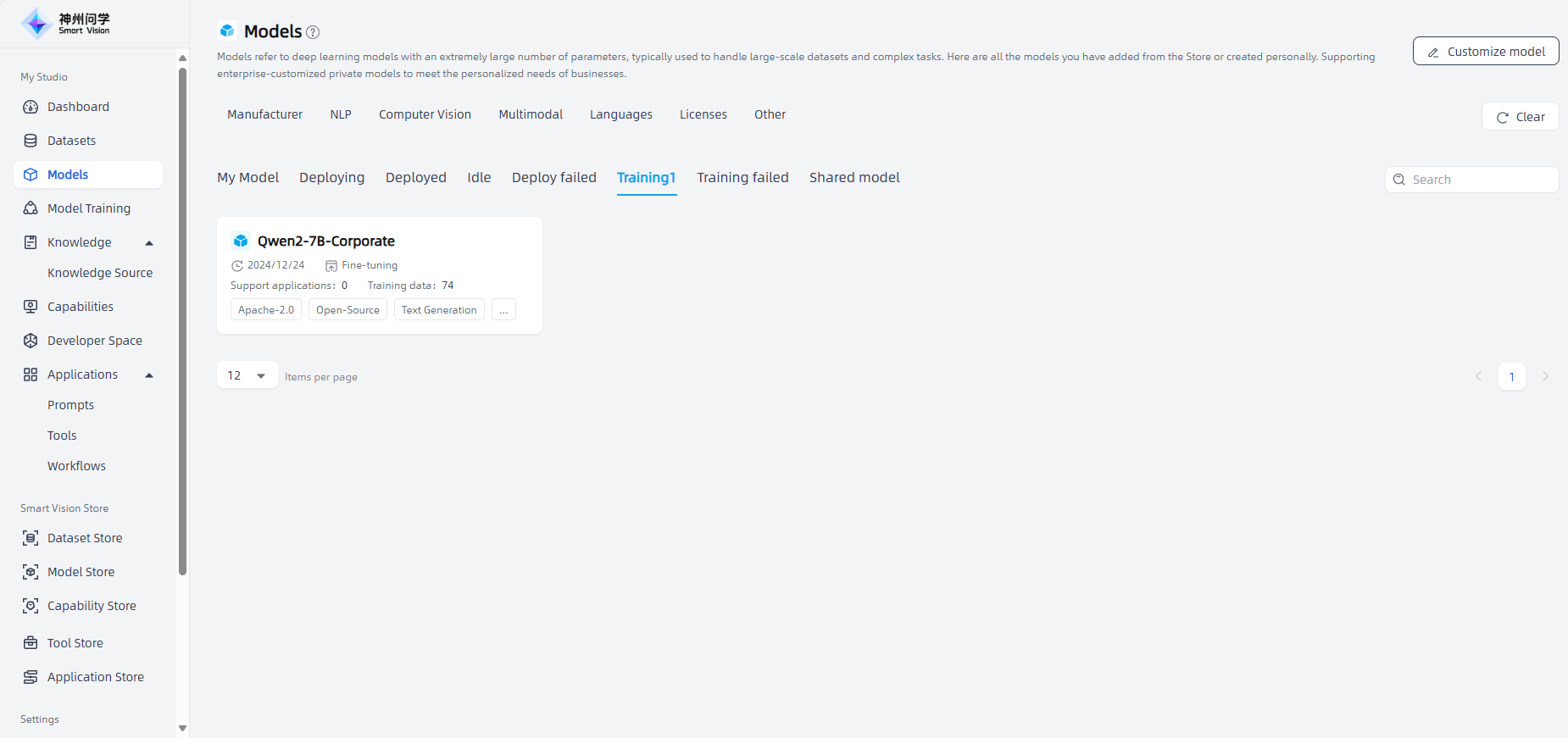
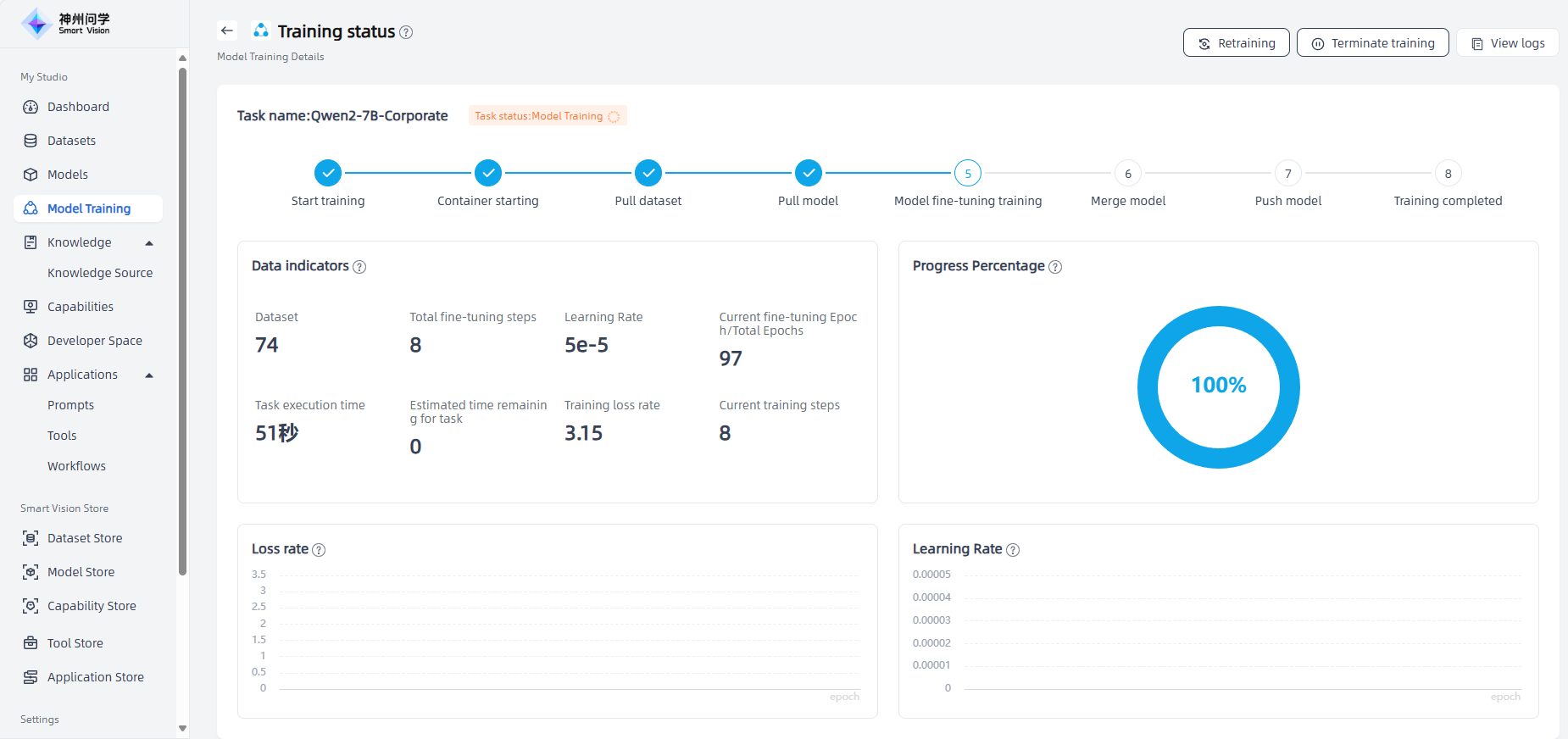
Models that have been trained successfully are displayed in "My Model". Click to enter the details and you can evaluate the trained model. If it meets your needs, you can deploy the model on demand for use in your actual scenarios.

Models that have completed training but failed are displayed in "Training failed". Click to enter the training details page to retrain and view logs.
